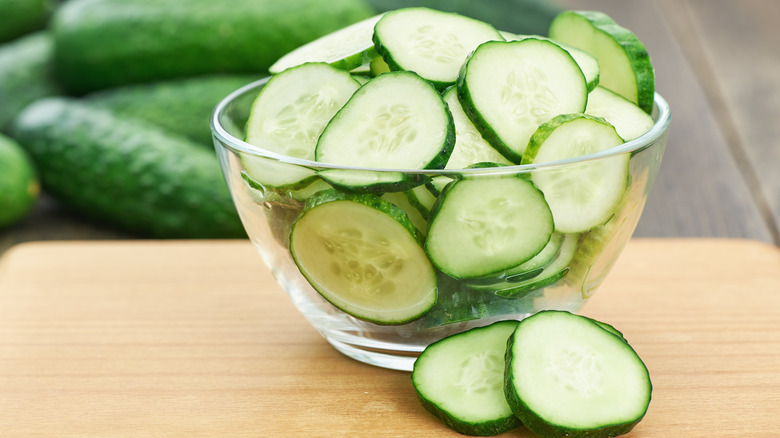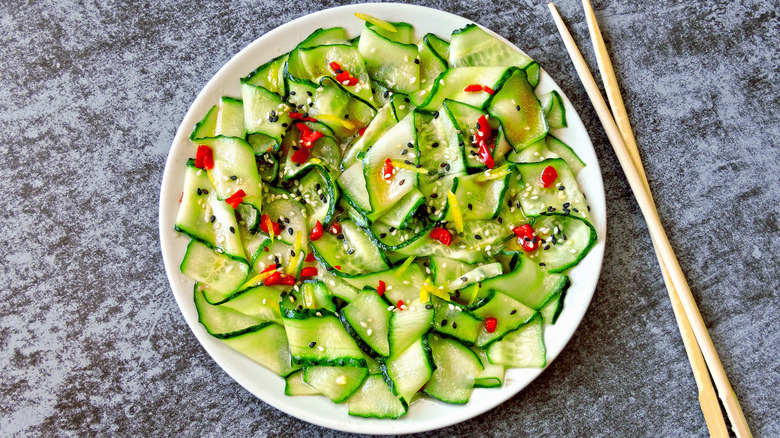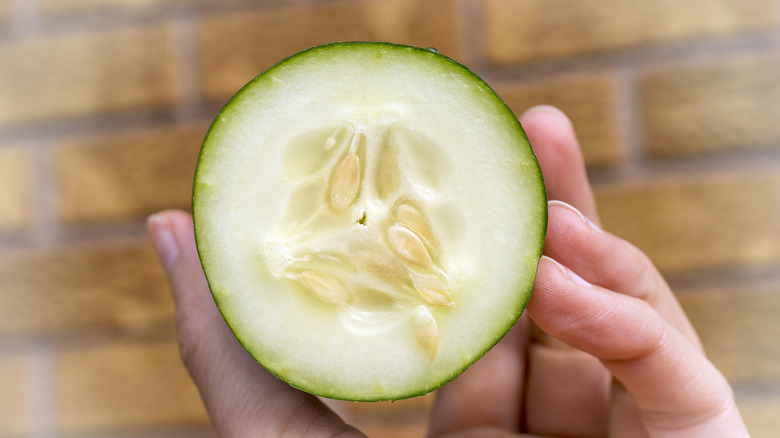You Must Salt And Drain Cucumbers Before Adding Them To Your Salad
The cucumber: refreshing, crunchy, and mild. Whether the cucumber is at the center of the stage or a supporting actor, it's the perfect addition to any salad. The only downside to these wondrous green cylinders is that their high water content can thin other flavors in the salad. Adding high-moisture ingredients like cucumber is one of the biggest mistakes everyone makes with chicken salad.
Another good way to present this problem is with a classic Polish dish, the Mizeria, which celebrates cucumbers with a beautiful dill-packed sour cream dressing. Now picture adding water to sour cream — have you got the ick? Watery sour cream is not appetizing, and it's the exact result you'll reach if you don't salt and drain your cucumbers before adding them. The Mizeria example is great because you can clearly imagine how watery cucumbers ruin the dressing. This is not always clear in other salads where the dressing is translucent, but it still happens. It's best to salt and strain your cucumbers before using them in any case!
Chop, salt, drain, rinse
Salting and draining your cucumbers may add some prep time but it's a simple process. Always start by washing or scrubbing your fresh produce under running water, because produce is probably dirtier than you think. Now slice the cucumber to the desired size (strips, cubes, or sticks) and place it into a colander. Sprinkle salt over the pieces until coated, and leave to drip for 20-30 minutes. After this time, softly apply pressure to each piece to remove any other water that might be held on the surface, and then rinse under cold water to remove the salt.
It's best to pat the slices dry after rinsing, and boom — you're good to go. The salt will pull out water from inside the cucumber and leave you with a drier cucumber canvas to paint your salad on. While this process can take just under one hour, avoiding a soggy, tasteless salad is entirely worth it. A similar method is also used to remove excess moisture from aubergine or zucchini.
To salt or not to salt?
Regarding what salt you should use, kosher salt clings well to vegetables and is easily distributed. Himalayan sea salt is another good option, but you'll have to ensure you can grind it down to a small enough size. Himalayan sea salt also contains traces of calcium, potassium, and magnesium, so it's seen as a healthier salt alternative. Needless to say, it should still be consumed in small amounts.
If you're trying to watch your salt intake and need another hack to reduce the water content in cucumbers, you can remove the cucumber seeds and gel-like center. This is where the cucumber holds a large quantity of its water. It's also a good alternative if you're short on time — as you can quickly scoop out the seeds and get going on your salad. However, it will not yield identical results, as the salting method targets the whole cucumber, not just the center. The next time you add cucumber to a salad, try the salt and drain trick and see how much your salad flavors are amplified.


